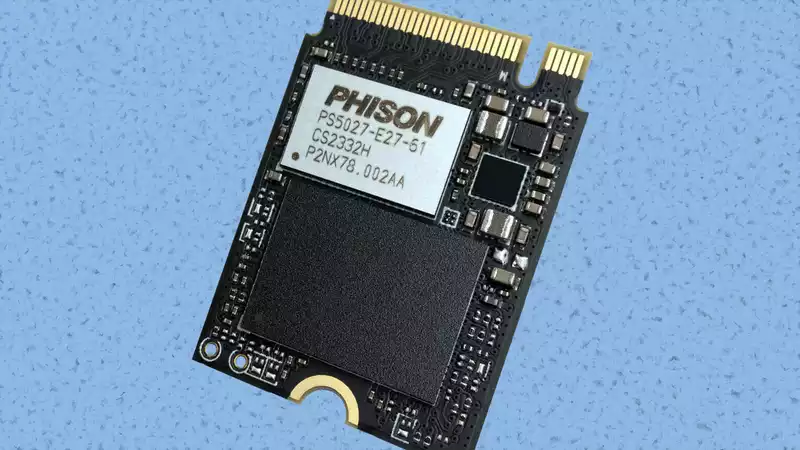Portable gaming PCs have rather specific needs when it comes to storage. SSD controller wizard Phison announced three new chips at this year's CES event, one of which is a perfect match for SSDs designed for Steam Deck and other portable PCs. designed for Steam Deck and other portable PCs.
The most interesting controller announced was the PS5027-E27T. While the other two are PCIe 5.0, this one uses the older 4.0 specification, but is still capable of up to 7400MB/s and 6700MB/s sequential read/write respectively. The reduced transfer rate is intended to keep power consumption (and thus heat generation) as low as possible; the low-power state of L1.2 is less than 5 mW.
While not targeted solely at this market, the E27T is an ideal SSD controller for portable gaming PCs; the best M.2 2230 drives available for applications such as Steam Deck typically use Phison's E21T chip, and the E27T is a good choice for portable gaming PCs, peak sustained read/write speeds of 5,000/4,500 MB/sec.
In other words, looking at these numbers alone, the E27T is a significant improvement. The E27T also supports up to 8TB of 3D TLC and QLC flash memory, with the best performance achieved when using 2TB or more. However, even the smallest configuration, 512GB, remains better than any currently available for portable PCs.
Phison's other new models are the PS5031-E31T and the PS5026-E26 "Max14um". The former and the aforementioned E27T are so-called DRAM-less controllers. This means that SSDs built with these controllers do not have DDR memory chips on the circuit board.
They are typically used to store a huge map of what data is stored on the drive and where; DRAM-less storage drives must use some of the capacity of the SSD itself, affecting the maximum sustained performance that can be obtained from the drive.
Targeted at the mainstream PC industry, the E31T is still fairly state-of-the-art, using the PCIe 5.0 interface to handle data and instruction transfers; built on TMSC's N7 process node (the same one used in AMD's RDNA 2 graphics chip, for example) ), the E31T is designed to consume as little power as possible. Not only is it ideal for notebooks, but less power means less heat, which is good news for any PC.
Peak performance is claimed at 10,800 MB/sec sequential read/write, which is more than enough for most PC gamers. Of course, SSDs using this controller will not automatically be this fast, but it is at least possible.
The new E26 "Max14um" controller, the exact opposite of the E31T, has twice the flash channels and chip enable signals of the low-power processor. Using DDR4 or LPDDR4 for maximum performance, Phison claims that the PCIe 5.0 chip supports sequential read and write data rates of up to 14,000 MB/s and 12,000 MB/s,
while the E26 "Max14um" controller supports up to 12,000 MB/s.
This is ...... Hmmm ...... This may seem a bit odd, given that it is an older and less compact process than the N7 used to manufacture the E31T, but this is to balance manufacturing costs with power consumption and chip size. This is to balance manufacturing costs with power consumption and chip size. [Fison's controller chips are used by Crucial, Corsair, Sabrent, Nextorage, and many others, so it is a safe bet that these new models will be used in the best SSDs coming out this year.
We expect the E31T, E27T, and E26 to help bring down costs and temperatures.
We will let you know as soon as we get SSDs using Phison's latest chips.
_____________________________________ PC Gamer's CES 2024 coverage is courtesy of Asus Republic of Gamers.


Comments